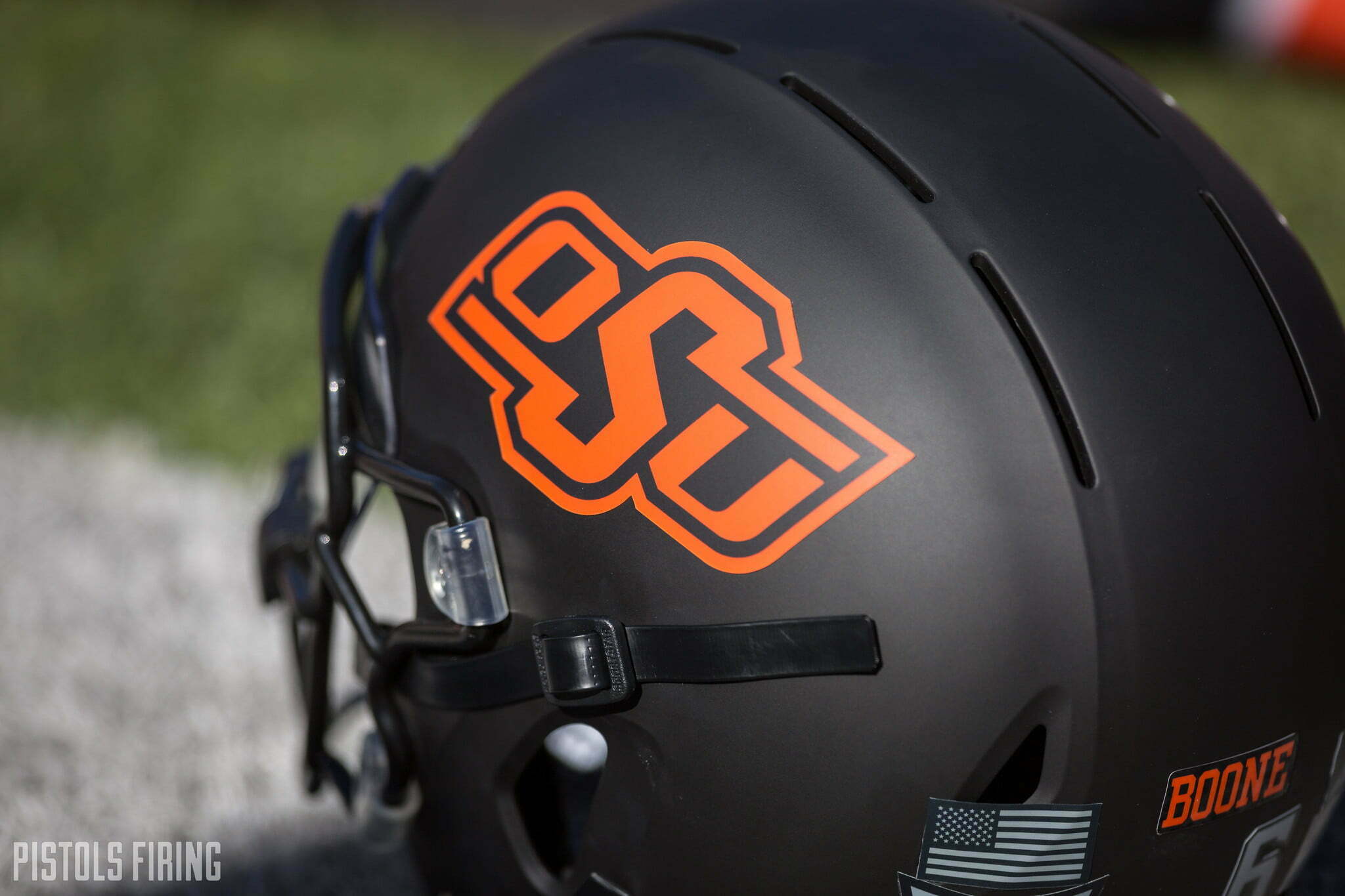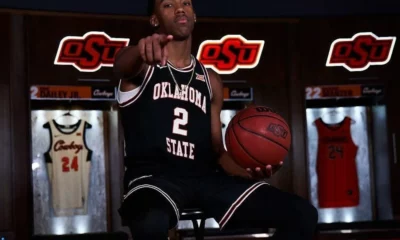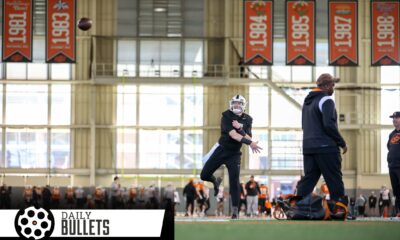Football
Pistols Firing Film Look: Breaking Down Graduate Transfer Josh Sills
This transfer should be able to fill a hole on OSU’s offensive line next season.

In my last post in the 2020 recruiting class film study series, I stepped away from the incoming freshmen and took a look at Arkansas transfer Collin Clay. For this breakdown, I’m going to stick with the transfers and provide some analysis on West Virginia graduate transfer offensive lineman Josh Sills. My previous breakdowns in this series can be found at the links below.
• Shane Illingworth
• Trent Pullen
• Eli Russ
• Collin Clay
The 6-6, 326-pound Sills started for two seasons as a Mountaineer before missing nearly all of 2019 with a shoulder injury. The Ohio product is a versatile guard who dominated all over the interior of the offensive line for WVU, earning AP Second Team All-Big 12 Honors in 2018.
During his tenure in Morgantown, Sills had three offensive line coaches, Ron Crook, Joe Wickline, and most recently, Matt Moore. Wickline was a long-time offensive line coach on Mike Gundy’s staff at OSU, and this may assist in Sills’ assimilation into the Cowboy offense. In addition, Sills was a part of West Virginia’s Dana Holgorsen-led offensive attack for most of his career and this should pretty closely resemble what OSU will try to do on offense next season.
I was able to watch WVU’s games against Iowa State and TCU from the 2018 season, along with a portion of the OU game. Not only were ISU and TCU the top two defenses in the Big 12 that year, but both teams provide different looks on the defensive line, allowing me to get a good look of Sills handling different defensive situations. Now, let’s get into the breakdown.
Run Blocking
Sills is an excellent run blocker. He consistently moves defenders out of the way and opens up rushing lanes for whoever is carrying the football. One of the primary reasons Sills is such a good run blocker is his overall strength.
In addition, he does a great job of finding leverage points, getting his hands in the correct position and driving his feet through the defender. In the following video, you’ll see an example of Sills (No. 73) clearing a path for the running back.
Sills also excels as a puller and, as mentioned above, has plenty of experience with Power and GT Counter. Additionally, he not only does a good job of finding someone to block when pulling, but he makes sure to initiate the contact and move people completely out of the play, as shown in the clip below.
Sills is very athletic for his size, but he does have some limitations in lateral mobility that can cause him to miss blocks on occasions. However, he has shown to be sufficient in getting to the second level and landing blocks on moving targets, as shown below.
Pass Blocking
The first thing that stood out to me when watching Sills in pass protection was his ability to use his length and punch to keep pass rushers at a distance.
He doesn’t usually overextend and does a good job of maintaining balance and staying square to the defender. In addition, he has no issue with power moves from pass rushers and easily anchors his body to absorb contact and maintain his ground. Below you’ll see the TCU linebacker getting a running start on the rush, trying to go straight through Sills, however Sills takes the contact and maintains his position.
Sills also isn’t afraid to initiate contact as a pass blocker and consistently knocked defenders off the line of scrimmage, making them pretty much useless. The former Mountaineer does well shuffling his feet to stay in front of his man, as you’ll see below.
However as I mentioned above in the run blocking section, he does have some limitations with overall lateral foot quickness. This does cause issues at times with very fast speed rushers, although in the two games I watched, there weren’t many guys who got by him.
Hands
I talked about this in the section above, but Sills has a great initial punch that is extremely powerful. This stood out on film time and time again. Once Sills gets his hands on a defender, that guy is pretty much non-existent until the next play. As you’ll see in the following clip, Sills moves the defender and helps to open up a lane.
He wasn’t called for a penalty in either of the games I watched, and did a good job of keeping his hands inside for the most part.
Power at Point of Attack
I’ve talked about it already, but Sills fires off the line once the ball is snapped. He has plenty of strength in his 6-6, 326-pound frame to bully defenders and push piles. Sills uses this strength and leverage to open up massive holes in the running game. I feel like when someone describes an offensive lineman as a “mauler,” others tend to feel that that player is not technically sound. However, this is not the case with Sills, he’s a “mauler” with incredible technique.
Versatility
Sills has played all over the interior of the offensive line during his college career. He has spent time at both guard spots, as well as the center position. He has the size and skill to play tackle as well, but will most likely fill the left guard spot left by former Cowboy Marcus Keyes next season for OSU.
Assuming Sills can fully recover from the shoulder surgery he had last September, which can sometimes have a recovery time of four to six months, and quickly learn the OSU offensive scheme, I think he will be the biggest get in this 2020 class. I went back and watched the Cowboys take on Iowa State and TCU, to get a feel of how Keyes played in those games, and although Keyes is a great talent … I think Sills is the all-around better lineman.

-

 Football3 days ago
Football3 days agoFour-Star Quarterback Adam Schobel Commits to Oklahoma State, Flips from Baylor
-

 Hoops3 days ago
Hoops3 days ago‘Keep Turning Over the Rocks’: Looking at the Portal Landscape as Lutz Looks to Solidify His First OSU Roster
-

 Hoops3 days ago
Hoops3 days agoFour-Star Signee Jeremiah Johnson Reaffirms Commitment to Oklahoma State after Coaching Change
-

 Daily Bullets3 days ago
Daily Bullets3 days agoDaily Bullets (Apr. 23): Pokes Land Four-Star Quarterback, Retain Talent from Mike Boynton Era






